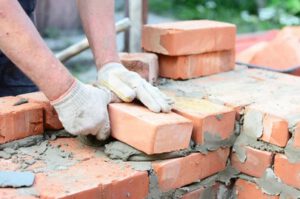There are several factors to consider when selecting a siding contractor. Ideally, they should be reputable and offer a range of different materials and designs. You should be able to view examples of completed work and testimonials before you hire them. Furthermore, Siding contractor can explain their responsibilities and how to get the job done correctly. Here are some things to look for when choosing a siding contractor. Read on to find out more.
Before hiring a siding contractor, it is important to determine the project’s timeframe. Most siding installation projects last 10 to 14 days, and extra days are necessary for painting. During this time, a siding contractor will remove any old siding, prep the house for the new one, and complete the final touches. This includes trimming down shrubbery and grass around the home so that the new siding can be installed properly. Also, it will make it easier to find nails and staples. You should remove all furniture and other objects from the exterior of the home before letting contractors begin the project.
Sidings are a vital part of a home’s exterior. They protect the home from all kinds of weather and moisture, and if they are installed improperly, they will break down. This can cause a number of problems, including foundation damage and mould growth on the walls. Sidings protect the home’s joints and bones from harsh weather, increasing energy efficiency, and repairing structural damage. But if you are considering replacing your siding, it’s best to talk with an expert in this field.
Fiber cement siding is a popular choice among homeowners looking for a durable and attractive siding solution. This type of siding is a good choice for people who want a realistic, high-end look without the expense or maintenance of natural wood. These sidings also resist moisture, insects, and rot and are considered a high-end siding material. These are some of the main reasons why fiber cement sidings are considered high-end siding materials. If you are looking for a siding company, you can visit our website to get a quote for fiber cement and other types of fiber cement sidings.
Choose the type of color you’d like. Many types of siding come in a wide range of colors and styles. You can contact the manufacturer of a certain type of siding and request a custom-color. Otherwise, you can opt for a standard color or contact a siding contractor for additional options. Aside from these benefits, vinyl siding also has a number of other advantages. If you’re looking for an attractive, long-lasting siding, it’s important to choose the right type of material.
Composite wood is the most durable and attractive type of siding. It’s also easy to install. While it can be more expensive than other types of siding, it’s extremely durable. You can also choose stone veneer if you’re looking for a cost-effective option. While stone veneer is inexpensive, it’s also environmentally unfriendly. Manufactured wood looks like real wood but can be susceptible to mold. Despite the benefits of composite wood, it’s important to consider the maintenance requirements of composite wood siding.
Siding is an essential component of a home’s exterior design. It protects it from harsh weather conditions, which can make the interior uncomfortable and even cause problems with mold. It also adds curb appeal. Ultimately, siding is a worthwhile investment that can add value to your home. But, it’s more than just a fashion statement! And don’t forget the benefits of natural beauty! So, why choose siding for your home?



